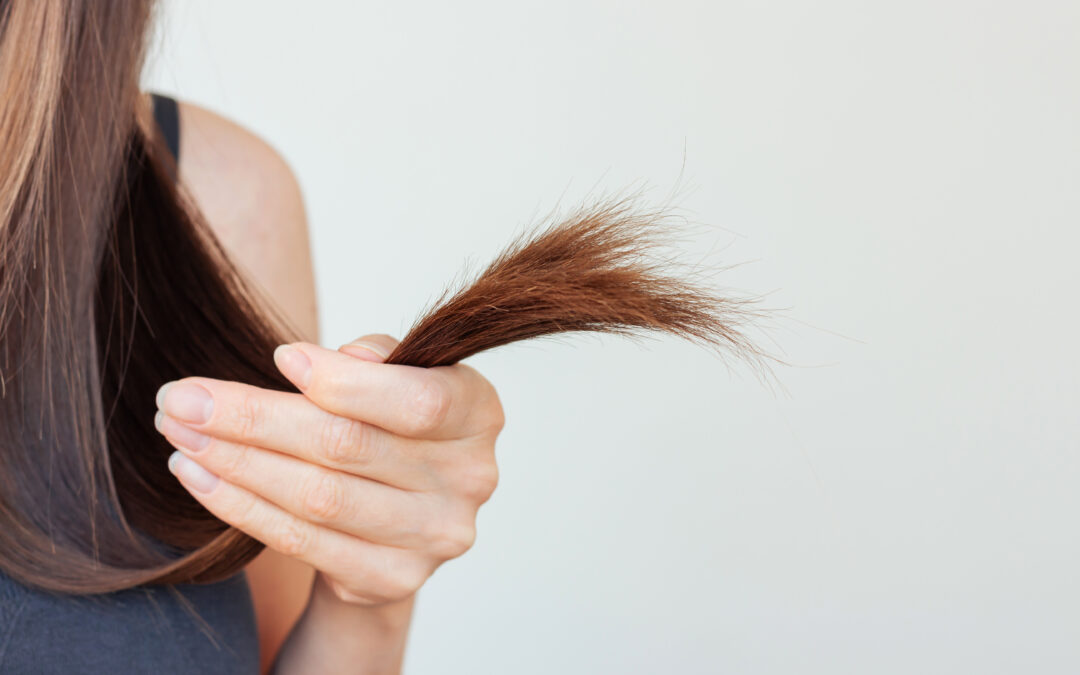Split ends.
Almost every client has them, and almost everyone wants to know how to get rid of them without sacrificing length.
You’ll hear everything from “just use a serum” to “try a dusting cut,” but what’s fact and what’s fiction?
As a future hairstyling professional, understanding the truth about split ends is essential. Not only can you help clients maintain healthier hair, but you can also set realistic expectations about what products can, and can’t, do.
Let’s break it down.
What Exactly Are Split Ends?
Split ends occur when the protective outer layer of the hair cuticle wears away, usually at the ends of the hair shaft. This leaves the inner core of the hair exposed and vulnerable to splitting. These splits can travel upward if left untrimmed, leading to breakage, frizz, and dullness.
There are different types of split ends too and not just the classic “Y” shape.
Some are feathered, some are multiple splits along one strand, and some form knots. All of them are signs of hair that’s been overstressed, undernourished, or neglected for too long.
What Causes Split Ends?
Split ends happen over time from a combination of damage and daily wear. Common culprits include:
- Heat styling (flat irons, curling wands, blow dryers) without protection
- Chemical treatments like colouring, bleaching, or relaxing
- Friction from towel drying, sleeping on cotton pillowcases, or overbrushing
- Environmental stressors such as sun exposure, wind, and pollution
- Lack of moisture, leading to dry, brittle strands that snap more easily
Even healthy hair can develop split ends eventually, especially if it’s long, layered, or frequently styled.
Can You Actually Repair Split Ends?
Let’s be honest: once a hair strand splits, it cannot be permanently repaired.
No product can fuse broken ends back together in the way they once were.
That said, some products can temporarily smooth, seal, and protect split ends, giving the hair a healthier appearance and preventing further damage.
Look for ingredients like:
- Silicones (e.g. dimethicone) that coat and smooth the strand
- Proteins and amino acids that help reinforce weakened areas
- Oils (argan, coconut, jojoba) to add moisture and shine
These treatments won’t reverse damage, but they can improve manageability and prevent the split from getting worse, buying time until your next trim.
Why Regular Trims Are Still Essential
If your client is serious about getting rid of split ends, there’s one guaranteed solution: a professional trim.
Trimming removes damaged ends before they travel further up the strand. It’s also one of the best ways to:
- Keep the hair looking fresh and tidy
- Prevent tangling and unnecessary breakage
- Encourage stronger, healthier-looking growth
The myth that trimming hair slows growth is just, well, a myth.
Hair grows from the scalp, not the ends. But keeping the ends neat and healthy helps the overall look and feel of your length.
Tips to Prevent Split Ends
While they’re hard to avoid entirely, here’s how clients (and you!) can reduce split ends between salon visits:
- Use a heat protectant before styling
- Lower heat settings on tools
- Gently towel-dry or use a microfiber towel
- Sleep on a silk or satin pillowcase
- Avoid over-washing, and always condition
- Detangle carefully, especially when wet
- Apply leave-in conditioners or hair oils regularly
Preventing damage is the real key to keeping hair smooth, shiny, and strong.
The Takeaway for Future Stylists
Split ends are a fact of life, but with the right knowledge, you can help clients manage them realistically.
While no product can truly “fix” a split end, there are plenty of ways to smooth them temporarily and prevent more from forming. Most importantly, regular trims and smart styling habits are the foundation for long-term hair health.
Want to learn more professional hair care techniques and how to give expert advice to real clients? Explore Modern College’s Hairstyling Diploma Program and start building your career in the beauty industry today. Contact us now!

